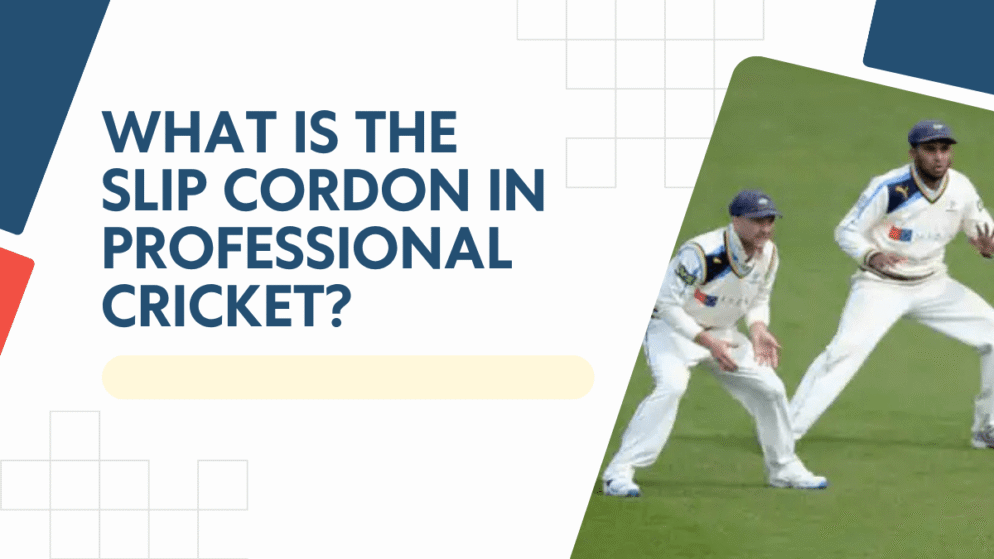

The slip cordon is a collective term for a group of fielders that are positioned behind the batter, beside the wicket-keeper towards the off-side. These fielders are usually top order batters who are expected to have quick and spontaneous reflexes.
Slip fielders were introduced in cricket when players realized that a lone wicket-keeper might not suffice to stop the flow of runs or catch the ball when the ball flies behind the batter after making contact with the bat.
A ball that travels to the slip cordon is rarely intentionally played. Since the ball ‘slips’ of the bat in most scenarios, the field position was named so. A second theory states that this term was given because these fielders are tasked with catching any ball that has slipped off the wicket-keeper’s gloves.
The slip fielders are named based on their order in proximity to the wicket-keeper. The first slip, second slip, and third slip can be commonly seen. However, this number can vary depending on what line and length a bowler chooses to bowl to a batter and the amount of swing that the bowler can impart depending on the wear and tear on the ball.
A pace bowler usually targets a line slightly outside the off-stump in the initial overs of the match when the ball is expected to swing. The plan is to force the batters to drive the ball against the swing, resulting in the ball catching the edge of the bat and travelling to the slip fielders.
A spinner rarely has two slips on the off-side. However, they can have a slip on the leg-side (called a leg slip) and one on the conventional off-side (first slip). The spin imparted on the ball can be vicious enough to travel wayward after a defensive or offensive shot is miscued by the batter. The ball is this subject to a catch to the slip fielders.
In 1977, a match between Australia and New Zealand saw all nine fielders positioned as slips. A second instance in 2000 saw the Aussies position all nine fielders as slips against Zimbabwe in a One Day International.
Slip fielding is special as it also requires special drills from the fielding coach. Some of the most prominent and successful slip fielders include Rahul Dravid, Graeme Smith, Matthew Hayden, Jacques Kallis, Mahela Jayawardene, VVS Laxman, AB de Villiers, Shane Warne, James Anderson, and Steve Smith.








